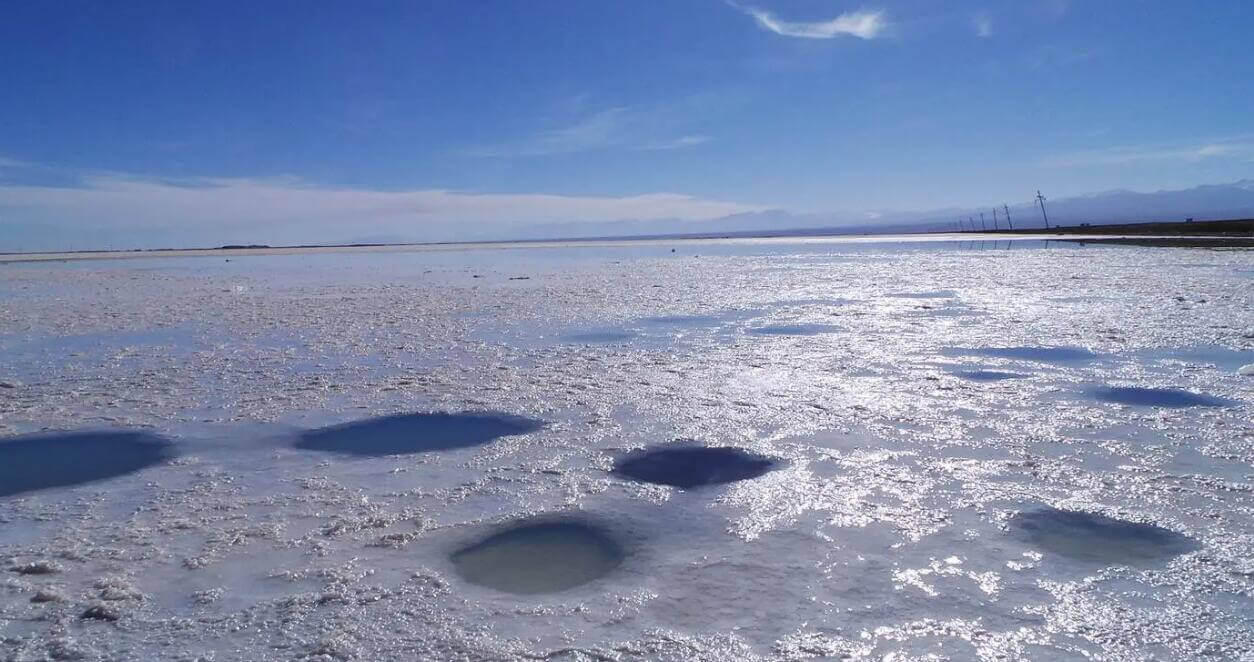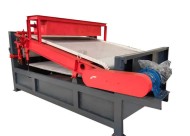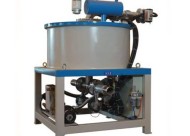The precipitation method is one of the common techniques used to extract lithium from salt lake brines. The process involves selectively precipitating lithium compounds from the brine solution through chemical reactions. The principle of the precipitation method is to use solar energy to evaporate and concentrate salt lake brine naturally. After removing boron, calcium, and magnesium to remove impurities, a mixture of precipitants or salting-out agents is added to the mother liquor to separate lithium in the form of precipitates. Precipitation extraction of lithium metal has been applied earlier in industry. The process is mature, simple to operate, and highly reliable. However, this method needs better adaptability to brines with high concentrations of alkaline earth metal ions and low concentrations of lithium ions. According to the specific process, the precipitation method is divided into carbonate, aluminate, boron magnesium, and boron lithium co-precipitation. We will introduce these three precipitation methods for lithium extraction from salt lakes.

1. Carbonate Precipitation Method
The carbonate precipitation method is to evaporate and concentrate the lithium-containing brine of the salt lake, add lime to remove the residual calcium and magnesium, and other basic metal impurities in the brine, and then add sodium carbonate precipitant to prepare lithium carbonate products. The method has low energy consumption and applies to industrial production and extraction. The disadvantage is that the selectivity to lithium is low, and alkali consumption is relatively large in the production process. After salt lake brine is naturally evaporated and concentrated by solar energy to make salt, it is separated by segmental crystallization. Then an alkaline precipitant and impurity metal Mg2+ are added to form an insoluble precipitate. Magnesium is removed by solid-liquid separation, and then a specific temperature and alkalinity are maintained. Evaporate and crystallize NaCl, and finally add precipitant soda ash to prepare lithium carbonate product. Use ammonia water and ammonium bicarbonate to adjust the brine alkalinity and precipitate impurity magnesium. The removal rate of magnesium is about 98%, and the recovery rate of lithium is above 95%. The carbonate precipitation method has the advantages of simple operation and mature technology. It is currently the most important method for extracting lithium from salt lake brine with a low magnesium-lithium ratio. In the separation and extraction process, problems such as large alkali consumption and poor selectivity limit its industrial application.
2. Aluminate Precipitation Method
By reasonably controlling the aluminum-lithium ratio, we obtain aluminum-lithium precipitates first, filter the sediments and calcinate the residues at high temperatures, and immerse the calcined products in water to separate aluminum-lithium. Use a precipitating agent to remove impurities such as calcium and magnesium in the lithium-containing solution, add sodium carbonate after evaporation and concentration for lithium precipitation reaction, and realize the production of lithium carbonate products. Use AlCl3·H2O and NaOH as raw materials, the aluminum hydroxide precipitation method is used to precipitate lithium selectively, and then the aluminum-lithium coprecipitate is subjected to high-temperature calcination and room temperature water immersion. After filtration, we obtain a lithium-containing solution. Add NaOH to the solution to remove calcium and magnesium impurities. After that, add sodium carbonate to get lithium carbonate. Generally speaking, the aluminate precipitation method has problems such as high evaporation energy consumption of carbonization liquid and roasting leaching liquid, large freshwater consumption, and complicated process flow.
3. Co-precipitation Method of Boron Magnesium And Boron Lithium
The boron-magnesium co-precipitation method refers to the demagnetization of the brine after the evaporation and concentration of the salt field to precipitate the potassium-magnesium mixed salt, adding an alkaline precipitant to control the pH value at 8-10, and under a specific temperature and pressure, make boron and magnesium co-precipitation. After solid-liquid separation, add NaOH to the mother liquor for deep magnesium removal. Then add soda ash to prepare lithium carbonate products. The recovery rate of lithium in this method reaches 80%-90%.
The boron-lithium co-precipitation method refers to removing impurities from the old brine that precipitated sodium and potassium, adding acidic precipitants such as hydrochloric acid or sulfuric acid to make boron-lithium co-precipitation, to realize the separation of lithium and magnesium. After the obtained residue is washed with water, impurities such as magnesium and calcium are deeply removed, and finally, a precipitant is added to prepare lithium carbonate. The recovery rate of lithium reaches 75%-85%.
The co-precipitation method of boron-magnesium and boron-lithium is suitable for producing lithium extraction from high-magnesium-lithium ratio salt lake brine in China. This method has simple separation procedures, strong operability, and high lithium yield. It has certain industrial application prospects, but the problem is that the precipitates obtained by the boron-magnesium co-precipitation method are mostly colloidal, and solid-liquid separation is difficult. During the separation process, the loss rate of lithium reaches 15%-20%, resulting in a great waste of lithium.
Based on the boron-lithium co-precipitation method, boron-lithium co-precipitation is carried out by using the process of primary freezing, evaporation with halogen, primary evaporation, secondary freezing, secondary evaporation, and precipitation of boron-lithium. The recovery rate of boron-lithium in this method is relatively high and has strong practicality. The precipitation process was developed earlier and had the advantages of mature process technology and high operational reliability. However, for the production process in China that uses high-magnesium-lithium ratio salt lake brine as raw material, alkaline precipitant is generally large, the production cost is relatively high, and high & poor selectivity to lithium and other issues.
It’s worth noting that the precipitation method is just one of several techniques employed for lithium extraction. Other methods, such as solvent extraction and direct lithium extraction from brine, are also used depending on the specific characteristics of the brine and the desired end product.
Extended Reading
Lithium Ore Flotation Technology
Lithium Processing Plant
The 5 Most Useful Methods Of Lithium Mining Beneficiation
10TPH Lepidolite Processing Plant
LATEST PRODUCTS
Heavy Plate Feeder
Capacity: 100-240 m3/h Power: 15-45 kW Speed: 0…
Plate Magnetic Separator
【Capacity】8-35 t/h 【Power】1.5-3 kW 【Applic…
Slurry Magnetic Separator
【Capacity】10-100 m3/h 【Feeding Material Densi…









